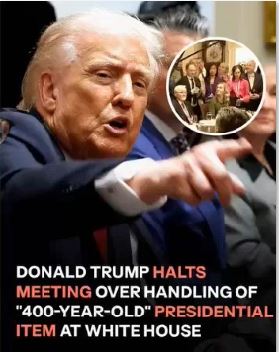A White House meeting between President Donald Trump and Australian Prime Minister Anthony Albanese on October 20 briefly paused when a camera operator accidentally bumped into a centuries-old mirror in the Cabinet Room. The sudden sound caught everyone’s attention, prompting the president to calmly address the moment, noting the mirror’s age and significance. His composed response underscored the balance between maintaining decorum and protecting the historic setting.
For a moment, the room grew quiet as focus shifted to the antique artifact, displayed for the occasion. President Trump acknowledged how even the most formal events can take unexpected turns, then smoothly redirected attention back to the meeting’s agenda. Once the atmosphere settled, the discussion continued under the quiet reflection of the centuries-old mirror.
The moment served as a gentle reminder that leadership often takes place amid the echoes of history. The White House, once a 19th-century residence, now stands as both a symbol of tradition and progress — where modern diplomacy unfolds alongside treasured relics of the past. Each corner of its storied rooms has witnessed not only political decisions but also spontaneous moments that reveal the human side of leadership.
Over time, the Oval Office and its surroundings have evolved through each presidency while retaining their enduring significance. From the elegant gold-accented design of today’s administration to the historic Resolute Desk used by leaders including Joe Biden, Donald Trump, Barack Obama, George W. Bush, Ronald Reagan, and Richard Nixon, the White House continues to represent an ongoing story of leadership, heritage, and the continuity of history in motion.
